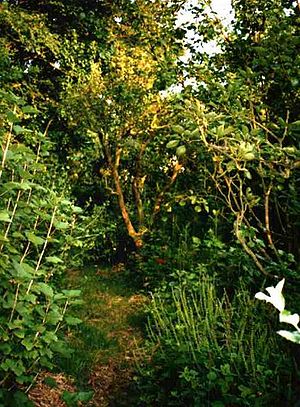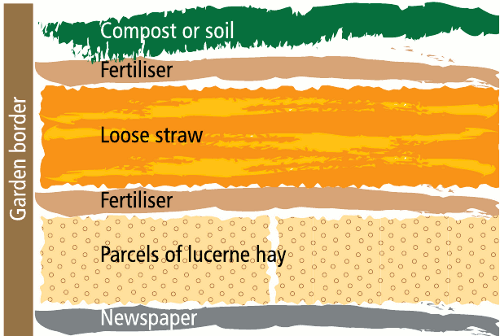
In the years since its conception,
permaculture has become a successful approach to
designing sustainable systems. Its adaptability and emphasis on meeting human needs means that it can be utilized in every climatic and cultural zone. However, at the moment the large proportion of practitioners are only likely to be inspired individuals and there is a distinct lack of broadscale permaculture projects. Nevertheless, permaculture has also been used successfully as a development tool to help meet the needs of indigenous communities facing degraded standards of living from development of land and the introduction of industrialized food.
This article lists some examples of permaculture sites.
Africa
Zimbabwe has 60 schools designed using permaculture, with a national team working within the schools' curriculum development unit. The UN High Commissioner for Refugees (UNHCR) has produced a report on using permaculture in refugee situations after successful use in camps in Southern Africa and Republic of Macedonia. The Biofarming approach applied in Ethiopia has very similar features and can be considered permaculture. It is mainly promoted by the non-governmental organisation BEA, based in Addis Ababa.
Arab Countries
A permaculture project has been developed in Jordan by the Permaculture Research Institute headquartered in Australia and run by Geoff Lawton. The project is strategically located in the desert land near the Dead Sea.
Oceania
Australia
The development of permaculture co-founder David Holmgren's home plot at Melliodora, Central Victoria, has been well documented at his website and published in e-book format [1].
Designed from permaculture principles, Crystal Waters is a socially and environmentally responsible, economically viable rural subdivision north of Brisbane, Queensland. Crystal Waters was designed by Max Lindegger, Robert Tap, Barry Goodman and Geoff Young, and established in 1987. It received the 1996 World Habitat Award (assessed by Dr Wally N’Dow) for its "pioneering work in demonstrating new ways of low impact, sustainable living". Eighty-three freehold residential and two commercial lots occupy 20% of the 259ha (640 acre) property. The remaining 80% is the best land, and is owned in common. It can be licensed for sustainable agriculture, forestry, recreation and habitat projects.
City Farm Perth is an example of community permaculture in an inner suburb of Perth, Western Australia. The farm was constructed on a brownfield site in 1994, and is a focal point for permaculture education, as well as community music and art.
Tikopians practice an intensive permaculture system, similar in principle to forest gardening and the gardens of the New Guinea highlands. Their agricultural practices are strongly and consciously tied to the population density. For example, around 1600 AD, the people agreed to slaughter all pigs on the island and substitute fishing, because the pigs were taking too much food that could be eaten by people.
New Zealand
There are many well established living examples of permaculture practice in New Zealand. Rainbow Valley Farm is the premier model. Rainbow Valley Farm was established in 1988 by Joe Polaischer and Trish Allen. The 21 ha. organic farm was designed on permaculture principles and ethics. [7]
 Permaculture is a method of producing foodstuff in a closed loop that maintains a self-sufficient system.
Permaculture is a method of producing foodstuff in a closed loop that maintains a self-sufficient system.


 Permaculture
Permaculture





 With all travel and work away from home, it looked nearly impossible to attempt “walking the talk” at our farm. That was nine years ago, though, and we since have succeeded in turning our land and and home into a drylands permaculture and sustainable living showcase. Our practices and climate reflect the need for a more perennial polyculture system which is in the best tradition of permaculture. We also have to take into consideration the aesthetics and desires of our fellow community members, with whom we share the joys and the ownership of our ten acre oasis.
With all travel and work away from home, it looked nearly impossible to attempt “walking the talk” at our farm. That was nine years ago, though, and we since have succeeded in turning our land and and home into a drylands permaculture and sustainable living showcase. Our practices and climate reflect the need for a more perennial polyculture system which is in the best tradition of permaculture. We also have to take into consideration the aesthetics and desires of our fellow community members, with whom we share the joys and the ownership of our ten acre oasis. 



